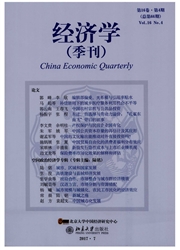

 中文摘要:
中文摘要:
在全球金融危机中,政府注资银行作为各国救助银行的重要手段成为学术焦点之一。本文借鉴了Shleifer and Vishny(1998)的政府决策模型,构造了政府注资银行的福利函数以决定最优注资额度,从而将政府注资额度内生化;同时,本文在银行寡头垄断模型的范式下将政府、银行和企业部门三者纳入博弈框架,揭示政府选择不同的注资银行政策对银行业所产生的影响。对1991—2002年间日本银行系统性危机所进行的数值模拟结果表明日本1999年3月的注资对存贷款市场的影响具有两面性,同时也揭示了政府最优注资额度及其对银行贷款边际利润和存款边际成本的影响。在此基础上,本文提出了惩罚性的注资银行措施可以遏制银行存贷款市场的逆向选择问题等政策主张。
 英文摘要:
英文摘要:
During the financial crisis, bank recapitalization has been deemed as one of the hot debated academic issues. Based on the government decision-making model of Shleifer and Vishny(1998), our model establishes the utility function of the government so as to obtain the optimal solution of the government. An oligopoly model of bank recapitalization which in- volves the government, banks, and firms is established. Our numerical calibration and simu- lation for Japan's banking crisis from 1991 to 2002 suggests that the recapitalization in 1999 had acted as a double-edged sword. Our numerical calibration calculates the optimal size of re- capitalization as well as the impact exerted on both marginal profits of loans and marginal costs of deposits of the Japanese banks. Finally, we provide some suggestions such as imple- menting bank recapitalization policy with penalty.
 同期刊论文项目
同期刊论文项目
 同项目期刊论文
同项目期刊论文
 期刊信息
期刊信息
